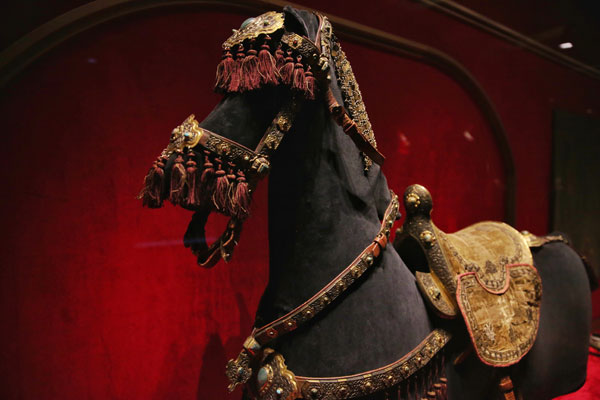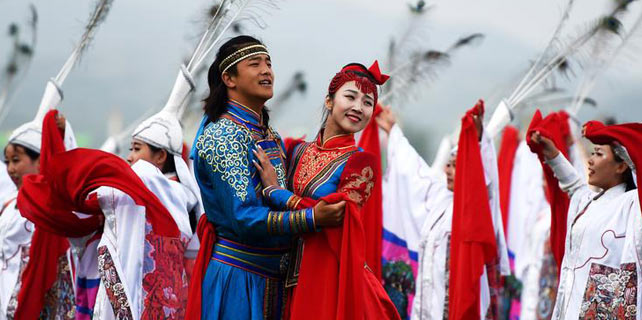The life of Sissi
Beyond the queen's old photos, oil paintings, dresses and other daily items, the exhibition also provides a panoramic view of Hungarian aristocracy during her time through such displays as jewelry, dinnerware and religious items.
Vagra points to a few highlighted exhibits. For example, a saddle made in the 18th century enabled women to ride horses sitting on one side. Sissi also used the saddle.
"I think the 'lady's saddle' is quite unique," he says. "It was designed in that way because of the custom that women were demanded to sit 'properly' on horseback."
He also says the Hungarian aristocrats' costumes and armories reflect the country's history.
A replica of the Holy Crown of Hungary, dating back to 1000 AD, is also on display. The item, made of silver gilt, pearl and cloisonne enamels, was used to prove the legitimacy of the monarchy in olden times. The original crown is displayed in the Hungarian Parliament and is heavily guarded.
"It's very important in Hungarian history-not only as a sign of royalty," Vagra says of the crown. "Even though there is no king now, the crown expresses the spirit of a nation and holds the country together."
Hungarians, also known as Magyars, are thought to have first settled in today's Hungary in 896 after migrating from the East. According to one theory, they are descendants of Huns-the Eurasian nomadic people, who possibly had connections with the Xiongnu people from China.





















